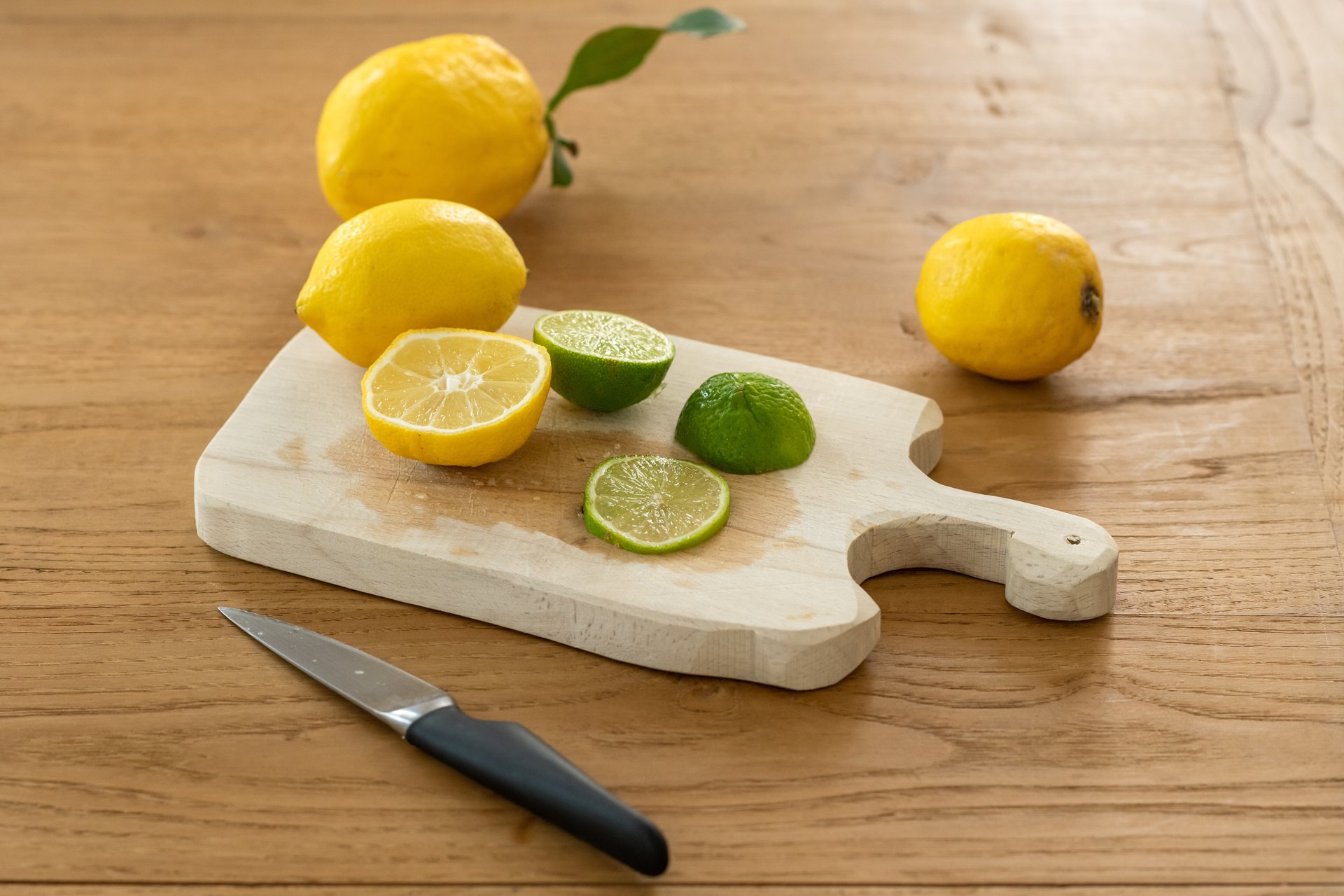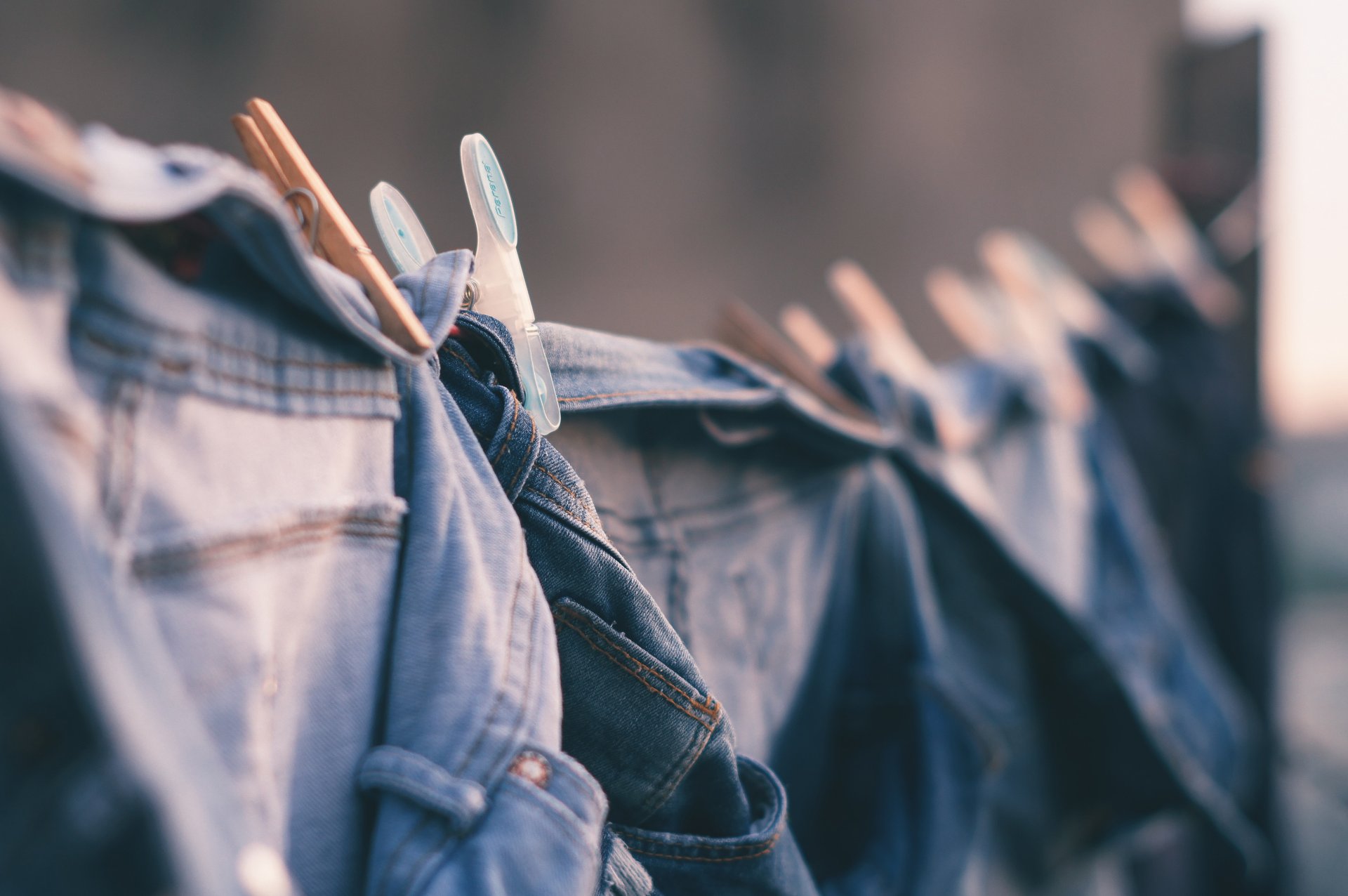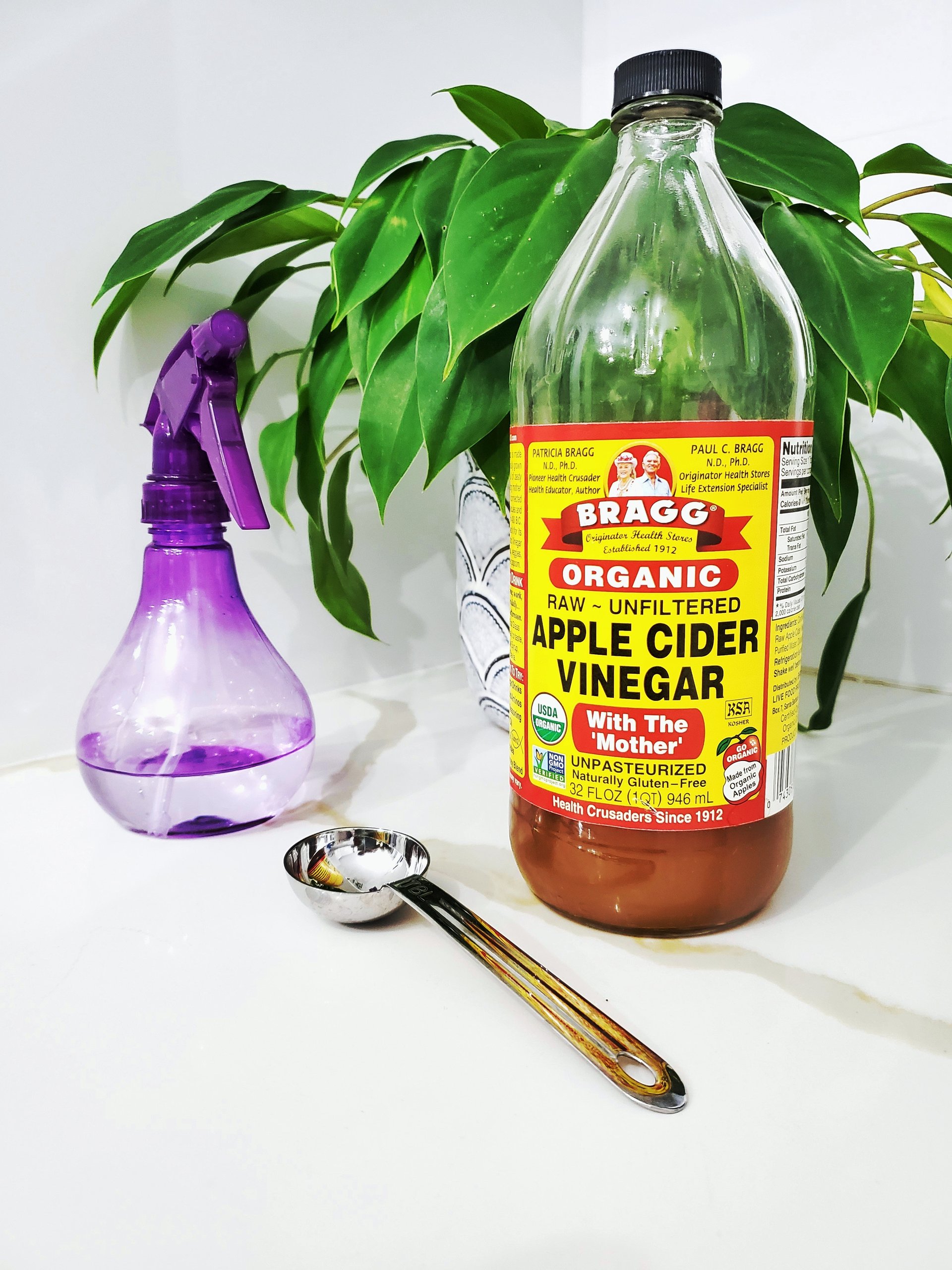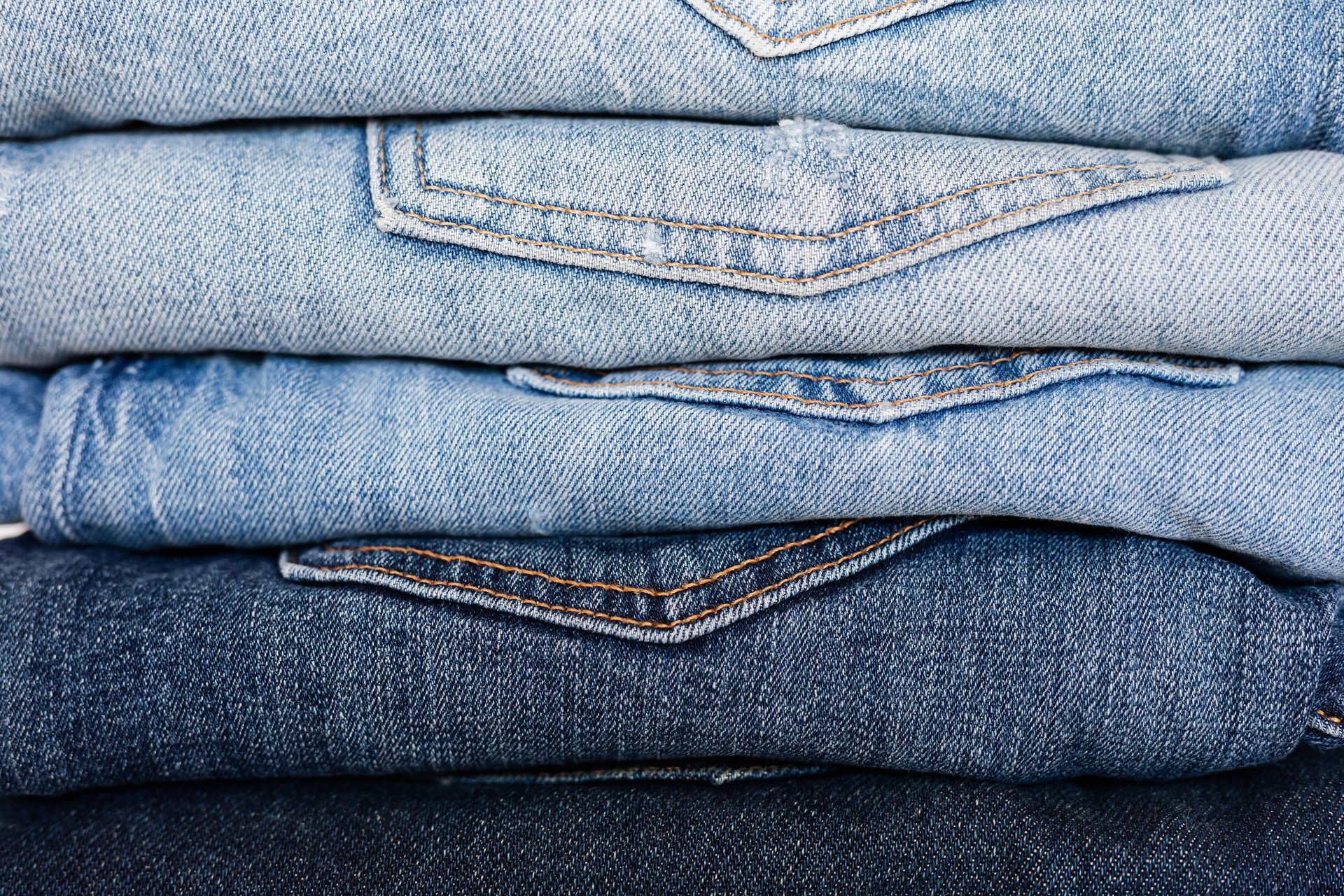If you purchase one of the products recommended in this article, I might receive a small affiliate commission. Thank you for your support!
What’s better than a truly good pair of lived-in jeans? The kind that has withstood the test of time, stretched to curve and fit you perfectly, and have softened to the perfect level. Well, it can often take a very long time to get there, as well as super high quality or vintage jeans. You can cheat this effect with a brand new pair of jeans or something of a stretchier, lower quality however by learning how to fade denim. There’s plenty of different methods, from the traditional bleach to items from your kitchen pantry like lemons and salt.
How to fade denim in the washing machine
This is the simplest method on how to fade your jeans. If you’ve ever read the laundry label on any denim item then you’ll know that hot water washing is a big no-no. This is because high-temperature laundering can cause the color in your denim to fade over time.
The fade you will achieve with this method will be very subtle as it will require multiple washes over a long period of time. However, you don’t want to overwash your jeans or they’ll lose their integrity.
Read: How to Lighten Jeans
How to fade jeans with bleach
The fastest way to fade denim is with bleach. You can use regular laundry bleach in your home or purchase specialty denim bleach from a fabric or haberdashery store. It’s important to note that bleaching works best on 100% cotton compositions and the more synthetic materials in your jeans, like spandex, polyester, or rayon, can result in damage to your trousers. Always read your clothing labels before bleaching.
When bleaching your jeans, make sure to wear gloves and clothes you don’t mind possibly getting ruined. You’ll want to work in a well-ventilated room away from any furniture, pets, and children.
Step 1: You can use a bucket to bleach your jeans but for an even spread more surface area like that of a bathtub will be better. In the tub or bucket mix 1 part bleach to 15 parts warm water. You can do this as a 1 liter of bleach to 15 liters of water mix as long as your ratio is correct. If you’re not happy with the lightness of your jeans later, you can always mix in more bleach in your second go around. Just remember that it’s better to begin with less bleach, not more.
Step 2: Fully emerge your jeans into the solution. It’s very easy to come out with splotchy or patchy jeans so make sure that every single corner of your jeans are soaked in the water. You’ll need to flip the jeans a few times in the solution for that even spread.
Step 3: Let the jeans soak for 15 minutes, making sure to watch them closely. Bleach acts very quickly and you will see the color change in minutes. You can leave them in longer if you’d still like a more faded look but that can only be done by carefully watching and flipping your jeans during the whole process.
Step 4: Empty your washing machine and wash and rinse your jeans on a low setting. Let them air dry and in a matter of hours you’ll have figured out how to fade denim.
Read: How to Starch Jeans
How to fade jeans in lemon juice
Lemons are nature’s bleach and they’re a great alternative if you don’t want to damage your skin with harsh chemicals or risk ruining your denim. This citrus fruit has its limitations however and you will most likely be able to achieve 1-2 shades of a lighter fade with them. It’s best to use concentrated lemon juice but you can squeeze your own lemons, just be prepared to squeeze a lot.
Step 1: Begin with wet jeans so that they can better absorb the lemon juice. You’ll want them to be wet but not sopping or dripping so wring them out after you’ve rinsed them or run them under water.
Step 2: Fill a bucket, at least 2-3 liters, with concentrated lemon juice and immerse the jeans into the juice. Turn the jeans over and swish them around to make sure that every single part of the jeans is in the lemon juice.
Step 3: Lemon bleaching will take a very long time so be prepared to let the jeans soak for at least 6 hours. You’ll want to keep checking on them every 30-45 minutes to see how the color is fading and to stir them around in the juice.
Step 4: When the color is just a shade or two darker than you would like the final result you can remove your jeans from the juice and rinse them out. You’ll need to hang them out to dry in direct sunlight as the sun helps solidify the bleaching process.
Read: Why Do People Starch Jeans?
How to fade jeans with vinegar
This may sound smelly but vinegar is a great chemical-free way to fade your jeans. You may have heard that vinegar baths are a great way to preserve the color and brightness of denim but if you mix the vinegar with your laundry detergent, it will have the opposite effect and fade the denim instead.
Opt for white vinegar or apple cider vinegar. The darker variations can potentially stain lighter denim.
Read: How to Get Grass Stains Out of Jeans
Step 1: You’ll want to use a bucket instead of the tub for this one unless you’re prepared to use a lot of bleach and air freshener afterward. Add 1 cup of vinegar to a bucket of water with half a cup of laundry detergent. You can also experiment with using vinegar alone or putting the vinegar-detergent mixture in the washing machine.
Step 2: Soak the jeans in the vinegar-water for 30 minutes. Make sure to turn them over and swish them around to get the jeans fully immersed. The color change won’t be very dramatic but it will be there.
Step 3: Thoroughly rinse the jeans in cold water. Don’t worry about the vinegar odor remaining forever. Once you hang it up in direct sunlight to dry the smell will disappear along with the moisture. Your faded jeans are now complete.
How to fade jeans with salt and sandpaper
It’s amazing how many dramatic changes you can make with your clothing with the everyday items in your home such as salt and sandpaper. Fine table salt works just as well as sea salt. This method achieves a very subtle fade.
Step 1: Fill the tub or a buck up with cold water and add 2-3 cups of salt.
Step 2: Soak your jeans in the salt water for an hour, swishing the jeans around every 15-20 minutes. Rinse them out and then hang them to dry in the sun.
Step 3: You can further focus and fade your jeans by using sandpaper if you would like certain areas like the knees or calves to be more faded than the rest of the jeans. If you don’t have sandpaper, you can also use the pumice stones from your bathroom in the same way.
Lay your jeans on a flat surface and very gently rub sandpaper back and forth over your jeans. Be very gentle as you can rip and damage the fabric with too much pressure and friction.
Step 4: Put your jeans in the washing machine on a low setting to cement the fade and that’s it.
How to fade jeans with coffee
Have you ever dyed paper to look old with tea bags or coffee before? This is something like that. Coffee is full of acidic properties that will age and fade your jeans for a very vintage look. You’ll want to use green beans for the best effect but roasted coffee beans will work too. Instant coffee can work as well but be warned that the results will be very minor.
Step 1: With your hands, rub the coffee beans in circular motions on your jeans. You can focus fade your jeans but rubbing the coffee only on particular areas you would like to fade or over the entire surface area of your jeans.
Step 2: Boil water and pour it all over the jeans. You won’t need very much water, at least a liter to 1.5 liters should, and let the jeans soak for 5 minutes or less.
Step 3: Rinse the jeans with cold water or put them on a very low setting in the washing machine and then hang them to dry in direct sunlight. The end result will be a very subtle and natural look.
Other Tips and Tricks
When using any of these fading methods, it’s best to work on jeans that have been worn and unwashed. Before you begin your fading adventures, wear your jeans inside out to create friction on the exterior. It will also help if you can sleep in them and do just as much activity as you can with them. Alternatively, you can rub them together very hard before beginning the fading process. All of these steps help the jeans adapt to the fading process faster.
Read: How to Acid Wash Jeans







